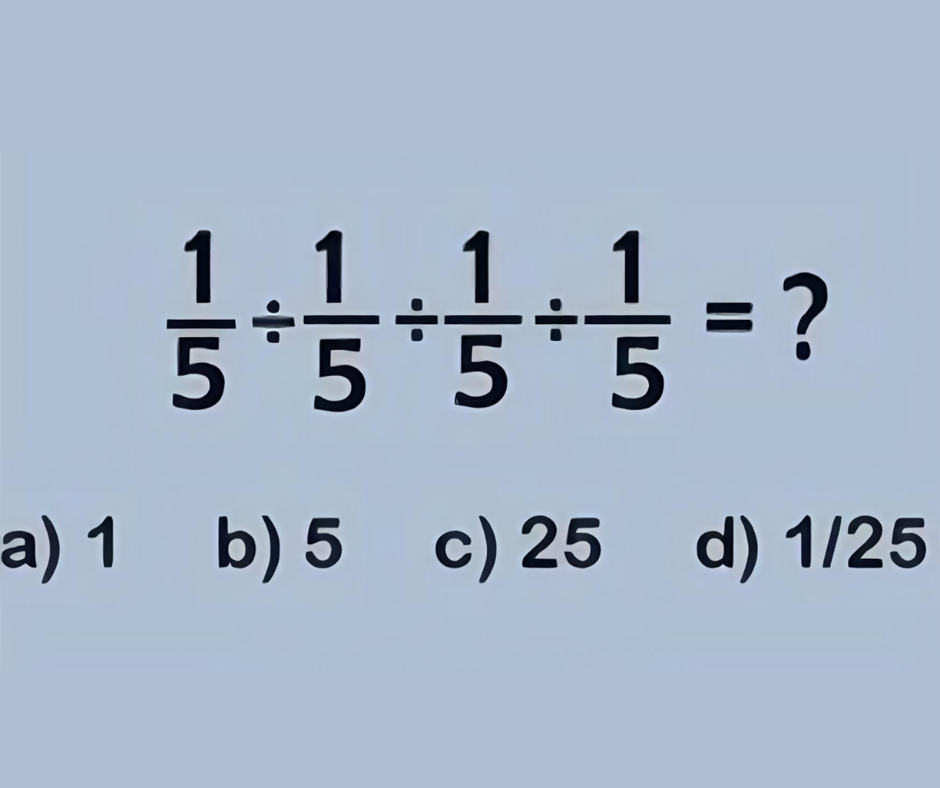Math puzzles have a way of capturing our attention, especially when they appear deceptively simple at first glance. You’ve likely come across one of those problems that seem straightforward but leave you scratching your head when you attempt to solve them. One such problem is the following:
Can you solve this?

The thing about problems like these is that they appear simple on the surface, but they involve multiple operations that require careful attention to detail. It’s easy to get tripped up when we assume it’s just a string of straightforward divisions. After all, dividing fractions isn’t inherently difficult, but overlooking small details often leads to wrong answers.
Before jumping into the solution, let’s look at some common mistakes people make when solving this type of problem:
- Not following the order of operations: In problems involving several divisions, it’s crucial to solve them in the correct order from left to right. Skipping steps or rushing can lead to errors.
- Misinterpreting division of fractions: Many people confuse how to divide fractions properly. The key is to remember the rule: when you divide by a fraction, you multiply by its reciprocal.
- Assuming all numbers cancel out too soon: Some may believe that since every term looks similar, the answer must be 1. This assumption overlooks the actual math involved in each step.
Let’s go through the problem step by step to see what the correct answer should be.
We start with the expression: 1/5÷1/5÷1/5÷1/5
- First Division: When you divide fractions, remember to multiply by the reciprocal. So, dividing 1/5 by 1/5 is the same as multiplying by the reciprocal of 1/5, which is 5:
1/5 : 1/5 = 1 - Second Division: Now, we move on to the next division. Since the first division gave us 1, we now have: 1÷1/5=1×5=5
- Third Division: Finally, we divide 5 by 1/5:
5÷1/5=5×5=25
And there you have it! The correct answer to the problem is 25.
As you can see, this problem isn’t so much about difficult math as it is about careful execution. If you’re not paying close attention, it’s easy to skip a step or misinterpret what the problem is asking you to do.
The lesson here is that even the simplest-looking math problems require precision. It’s not uncommon for people to make the mistake of guessing answers based on patterns or assumptions, especially when problems appear deceptively simple.
So, did you get it right on the first try? If not, don’t worry—you’re not alone! Problems like this one are meant to challenge your thinking and help you hone your attention to detail.
We’d love to hear your answer and how you approached the problem. Drop your solution in the comments below, and share this puzzle with your friends to see if they can crack it as well. Math puzzles like these are a fun way to sharpen your logical thinking skills and keep your brain engaged.
Solving math puzzles isn’t just about getting the right answer—it’s about training your brain to think critically and systematically. The more puzzles you try, the better you’ll get at noticing patterns, avoiding common mistakes, and mastering the order of operations.
So, if you enjoyed this challenge, why not take on a few more? Test yourself with different types of logic puzzles, math problems, or even brainteasers to keep your mind sharp. You never know when a simple puzzle might teach you a new trick!


